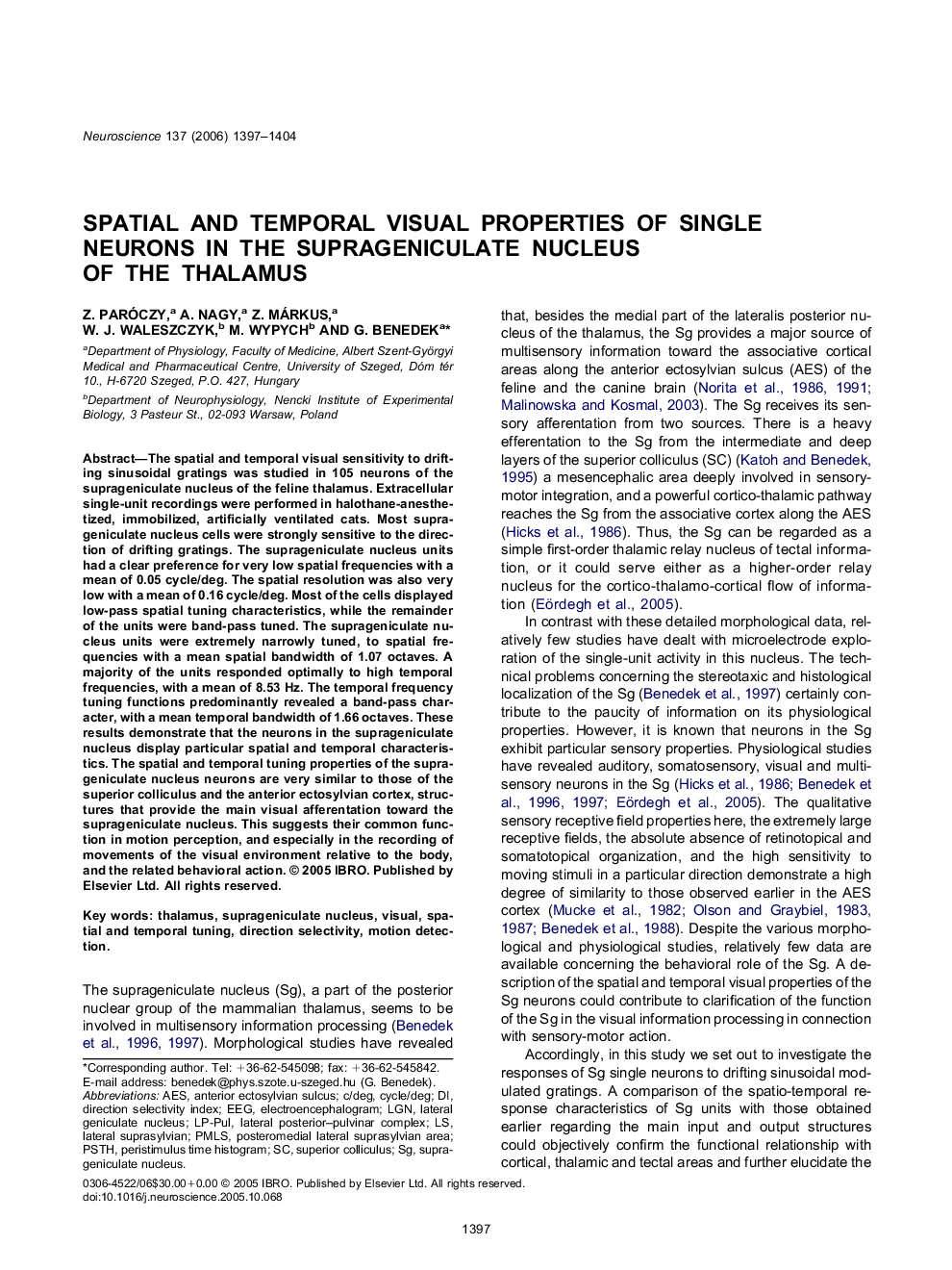| Article ID | Journal | Published Year | Pages | File Type |
|---|---|---|---|---|
| 4342232 | Neuroscience | 2006 | 8 Pages |
The spatial and temporal visual sensitivity to drifting sinusoidal gratings was studied in 105 neurons of the suprageniculate nucleus of the feline thalamus. Extracellular single-unit recordings were performed in halothane-anesthetized, immobilized, artificially ventilated cats. Most suprageniculate nucleus cells were strongly sensitive to the direction of drifting gratings. The suprageniculate nucleus units had a clear preference for very low spatial frequencies with a mean of 0.05 cycle/deg. The spatial resolution was also very low with a mean of 0.16 cycle/deg. Most of the cells displayed low-pass spatial tuning characteristics, while the remainder of the units were band-pass tuned. The suprageniculate nucleus units were extremely narrowly tuned, to spatial frequencies with a mean spatial bandwidth of 1.07 octaves. A majority of the units responded optimally to high temporal frequencies, with a mean of 8.53Hz. The temporal frequency tuning functions predominantly revealed a band-pass character, with a mean temporal bandwidth of 1.66 octaves. These results demonstrate that the neurons in the suprageniculate nucleus display particular spatial and temporal characteristics. The spatial and temporal tuning properties of the suprageniculate nucleus neurons are very similar to those of the superior colliculus and the anterior ectosylvian cortex, structures that provide the main visual afferentation toward the suprageniculate nucleus. This suggests their common function in motion perception, and especially in the recording of movements of the visual environment relative to the body, and the related behavioral action.
